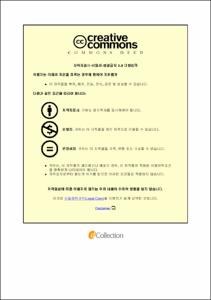Density Effects on Survival and Growth of the Rock Worm Marphysa sanguinea Larvae by Application of Biofloc Technology
- Alternative Title
- 바이오플락기술을 이용한 바윗털갯지렁이, Marphysa sanguinea유생의 생존과 성장에 미치는 밀도의 영향
- Abstract
- Eco-friendly polychaete aquaculture is expected to meet the increasing demand for the rock worm Marphysa sanguinea which is considered an economically viable species. However, larva breeding of this rock worm is characterized by high mortality and low productivity. The present study was conducted to determine the optimal stocking densities of M. sanguinea larvae cultured in a biofloc technology system.
Five groups of different densities, (10,000, 20,000, 30,000, 40,000 and 50,000 individual worms) of M sanguinea larvae, were reared for 100 days in a 20 L volume bottle in triplicate per density group. Results showed that there was a significant difference in survival rate amongst all treatments (P<0.05). The highest survival rate of 6.8 ± 0.6% was recorded at density group of 10,000 inds./bottle and the lowest survival rate of 2.3 ± 0.3% at density group of 50,000 inds./bottle. Mean final weight and the numbers of segments were the highest at the lowest density and the lowest at highest stocking density during 100 days of culture in biofloc technology system.
Thus, as for M. sanguinea larvae, the optimal stocking density was of 10,000 inds./bottle, where they attained weight of 0.0189 ± 0.003 g by application of biofloc technology.
- Issued Date
- 2018
- Awarded Date
- 2018.2
- Type
- Dissertation
- Publisher
- 부경대학교
- Affiliation
- 부경대학교 글로벌수산대학원
- Department
- 글로벌수산대학원 국제수산과학협동과정
- Advisor
- 김창훈
- Table Of Contents
- 1. Introduction 1
2. Materials and method 4
2.1 Source of experimental larvae and rearing conditions 4
2.2 Experimental design 5
2.3 Experimental biofloc water preparation 6
2.4 Biofloc management 6
2.5 Feeding of rock worm larvae 7
2.6 Physiochemical biofloc water quality analysis 7
2.7 Data collection 12
2.8 Statistical analysis 12
3. Results 13
3.1 Survival rate of M. sanguinea larvae 13
3.2 Growth performance of M. sanguinea larvae 16
3.3 Biofloc water physiochemical quality parameters 20
4. Discussion and Conclusion 33
References 38
Acknowledgments 44
- Degree
- Master
- Appears in Collections:
- 글로벌수산대학원 > 국제수산과학협동과정
- Files in This Item:
-
-
Download
 Density Effects on Survival and Growth of the Rock Worm Marphysa sanguinea Larvae by Application of .pdf
기타 데이터 / 790.13 kB / Adobe PDF
Density Effects on Survival and Growth of the Rock Worm Marphysa sanguinea Larvae by Application of .pdf
기타 데이터 / 790.13 kB / Adobe PDF
-
Items in Repository are protected by copyright, with all rights reserved, unless otherwise indicated.